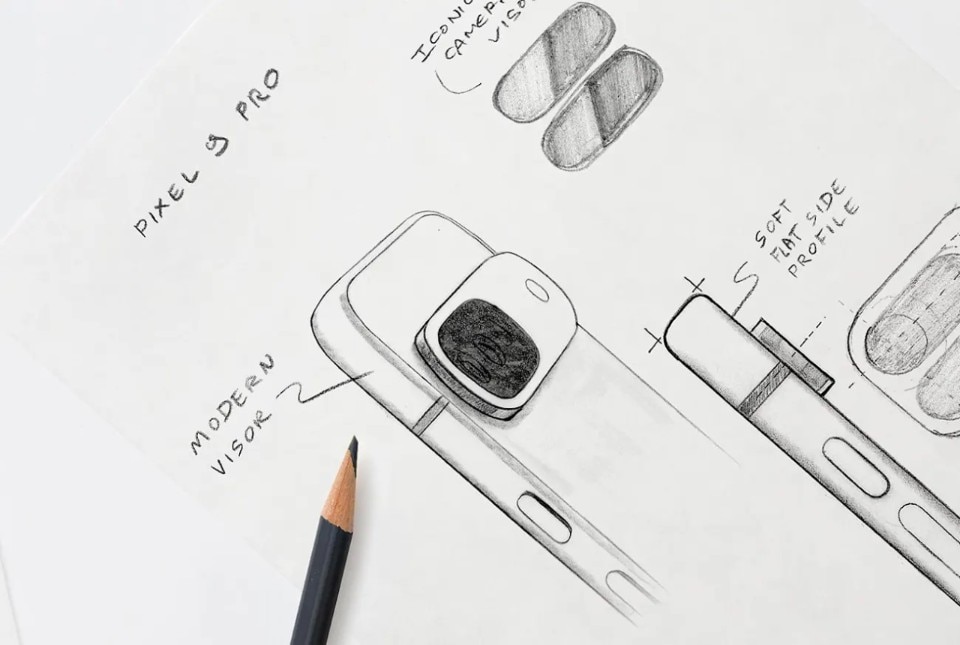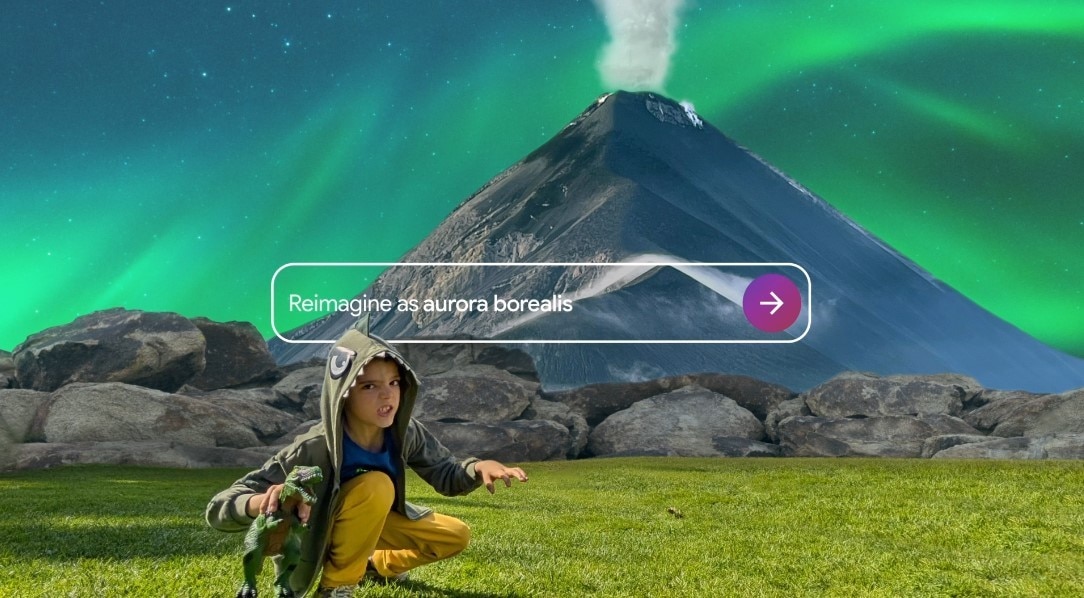Michael Specht is a longtime photographer, a camera quality expert, and Google’s Pixel Camera Product Manager. It sounds like the dream job for someone whose passion revolves around photos and cameras. Yet, since Google introduced the Pixel 9 series this August, his task has become suddenly more complicated. On the one hand, Google’s latest phones pack some of the best mobile cameras on the market. On the other hand, the company introduced a series of reality-bending generative AI features that make it extremely easy to disentangle the world that our eyes and the camera saw, and the final result is saved in the smartphone’s memory.
Google’s Pixel 9 and Pixel 9 Pro Add Me feature, for example, lets you take group photos by adding people to the frame by adding two separate shots. Reimagine, another AI feature based on Google’s Gemini, lets users add elements to the picture that were never there in the first place or completely replace the sky, remove parts of the pictures, and more.
Specht is the man in charge of explaining a lot of that to photographers and journalists like yours truly, trying to make sense of Google’s sudden acceleration into the realm of generative imaging.
“AI has been around in photography for quite some time, and we're beginning to go into this new era of AI and generative AI,” Michael Specht tells Domus. “These AI-led mobile platforms and Pixel are at the forefront of that from Google's perspective. Ultimately, we want you to have a device that you can fit in your pocket and use for gathering information from all around you and the world.
“AI has been around in photography for quite some time, and we're beginning to go into this new era of AI and generative AI,” Michael Specht tells Domus. “These AI-led mobile platforms and Pixel are at the forefront of that from Google's perspective. Ultimately, we want you to have a device that you can fit in your pocket and use for gathering information from all around you and the world. If you look at the goal of capturing photographs, we want to capture the world around us. We want to capture memories and experiences that we've had, always in the best way possible”.
We want to capture memories and experiences that we’ve had, always in the best way possible.
Michael Specht
For Google today, “the best way possible” has taken a new meaning. Until roughly last year, AI enhancements could be easily bundled under the “computational photography” moniker - i.e., mostly machine learning, deep learning, and image processing algorithms working together to push the diminutive lenses of smartphones past their once unsurmountable physical limits.
.jpg.foto.rmedium.jpg)
Generative AI has completely changed the game, and now Pixel’s cameras can do much more than just help you get the best shot, as they drastically simplify the task of hyper-editing the shot to your liking. Even when that means removing subjects with the Magic Eraser or adding and changing parts of the picture to obtain a representation of things, people, and places that never existed.
As we wade into the tricky waters of redefining what a photograph can be, Google is trying to find a balance between pushing the envelope of mobile photography and staying in the grip of the authenticity of our images. In some cases, like with AddMe, the trade-off has a positive outcome, and it's easy to envision examples of real-life usefulness.
“I was in Iceland with my family on vacation, and we were out on a glacier; no one else was around. To take our picture, I could have used the traditional option of a tripod and a timer, with all its complications,” says Specht. “With the new Pixel I could do that just with Add Me. I framed and took the first photo as a photographer, with only my family in it, and then stepped in. My wife could take the second image with a superimposed guide to frame it properly. The result was a composite image that allowed us to combine these two moments in time”.
According to Specht, Google’s new AI enhancements are the natural evolution of the photography roadmap that Google has always followed with the Pixels.
“Google’s approach around AI and gen-AI is to align it with our mission — to take the world's information, make it universally accessible, and organize it. We do that through imaging as well, whether it's before you capture the image with AI guidance, whether it’s computational imaging or post-capture editing tools, all the way through to organizing your images within Google Photos and being able to search your photos in the most effective way possible”.
With other AI features introduced by Google on the new Pixel 9, though, the risks of unraveling how we’ve always looked at photos from a societal perspective are suddenly clearer. With tools like Reimagine, it’s easier than ever to change a picture and bend the perceived reality it represents in a way that could be dangerous. To be fair, this is not just a Google issue but also an industry issue. It’s also worth reframing how much danger could be done with an altered picture: malevolent actors have had access to easy-to-use digital tools to doctor photos for a long time. What Google has chosen to do, though, is to put these easy-to-use reality-bending tools in the hands of more users than ever. The goal, says Specht, is to help people express themselves better through mobile photography, all while ensuring through watermarking and tagging that these AI-enhanced pictures are easily identifiable.

“From a photography standpoint, there are two key components. One is using AI to help create more authentic images. For example, if you take a photo in low light with a moving subject, the result often has noise and blur. That’s not how I saw it with my eyes. Cameras have limitations, but AI can help restore the image to match what I saw—noise-free, clear, and real-time, just like our eyes“, says Specht. The second component, he continued, is about providing tools that let people edit photos to reflect how they experienced the scene and the emotions they felt. That would be Magic Eraser, for example, which allows users to delete and clear part of a picture, removing, for example, other people. “We want these tools to be accessible to everyone. For instance, if I give my mom Photoshop, she’d need to watch a long tutorial to use it. Our goal is to make advanced tools, typically reserved for professionals, easily accessible to the masses through AI and post-capture editing."
Google’s approach around AI and gen-AI is to align it with our mission — to take the world's information, make it universally accessible, and organize it.
Michael Specht
Last but not least, when it comes to purely gen-AI features, Specht says it’s now a matter of democratizing artistic expression. “For example, replacing the sky in an image isn't something captured by the camera –– it's a creative decision made in post-editing,” says Specht.
While Specht’s comment helps make sense of Google’s approach to gen AI in mobile photography, the risk that these enhancements of people’s artistic abilities could turn into dangerous tools is not completely averted. To prevent that, concludes Specht, the company has implemented safeguards that hopefully would be enough to keep us safe from a deluge of AI-fake-content.
“In the end, we aim to provide tools that enable people to express creativity, even if they didn’t previously have the means,” concludes Specht. “It’s important to do this responsibly, clearly marking generative images as such and ensuring that our goal is empowering users, not manipulating the public.”

Klimahouse 2025: twenty years of sustainability
Now in its 20th edition, the international trade fair dedicated to responsible construction, energy efficiency and building renovation will be held in Bolzano from 29 January to 1 February.











